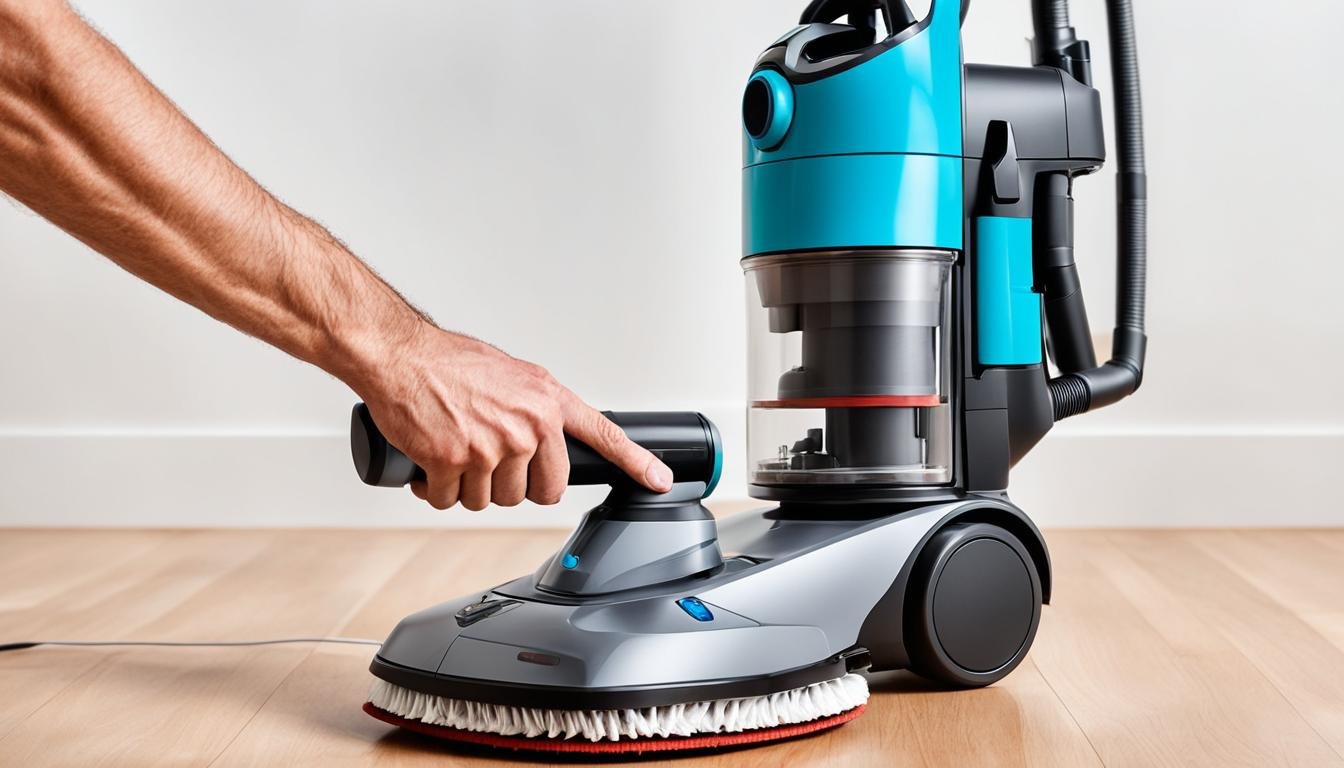Hello, I’m here to guide you on how to test vacuum cleaner suction. Regularly evaluating the suction strength is essential to ensuring that your vacuum is operating at its best. By following a few simple steps, you can easily check and maintain the performance of your cleaning companion.
Key Takeaways:
- Regularly testing your vacuum cleaner’s suction is crucial for maintaining performance and longevity.
- Start by emptying the bag or chamber and checking the filters, hose, and brush roll for any obstructions.
- If the necessary parts are clean and clear, examine the belt to ensure the brush roll is spinning properly.
- Pay attention to any changes in noise level or unpleasant odors, which may indicate issues that need attention.
- Consult your vacuum cleaner’s manual or reach out to the manufacturer for specific instructions and assistance.
How to test vacuum cleaner suction? Pro tips.
When it comes to testing the suction power of your vacuum cleaner, there are a few additional tips that can help ensure accurate results. Paying attention to these factors can provide valuable insights into the overall performance of your vacuum and help you maintain its efficiency.
Noise Level
One of the indicators of a potential issue with your vacuum cleaner’s suction is an abnormal increase in noise. If you notice that your vacuum suddenly becomes extra noisy during operation, it could be a sign of a clogged hose or a loose belt. Check the hose for any obstructions and ensure that the belt is properly attached and tightened. A secure belt will help maintain consistent brush roll rotation, improving suction power.
Unpleasant Smells
If you detect an unpleasant odor emanating from your vacuum cleaner, it’s essential to address it promptly. Regularly emptying the bag or canister and cleaning the air and exhaust filters can help eliminate any trapped debris or particles that may be causing the odor. A fresh and clean vacuum not only improves air quality but also ensures optimal suction performance.
Remember, referring to your vacuum cleaner’s manual or reaching out to the manufacturer for specific instructions and assistance is always a good idea. They can provide valuable insights into the testing process and offer guidance for troubleshooting specific issues.
Importance of Testing Vacuum Cleaner Suction
Regularly testing the suction of your vacuum cleaner is crucial for proper maintenance and optimal performance. Whether you own a Dyson, Bissell, Shark, or any other brand, ongoing suction tests can help identify and address potential issues in a timely manner, ensuring your vacuum operates at its best.
One common indicator of possible problems is decreased suction power. If you notice that your vacuum isn’t picking up dirt and debris as effectively as before, it may be a sign of clogged filters, a blocked hose, or a worn-out brush roll. By testing the suction regularly, you can quickly identify these issues and take appropriate action to restore your vacuum’s performance.
Additionally, unusual noises and unpleasant smells coming from your vacuum can also be warning signs of underlying problems. Performing suction tests allows you to pinpoint the source of the noise or smell, whether it’s a loose belt, a damaged motor, or a need for filter replacement. Addressing these issues promptly can help prevent further damage and extend the longevity of your vacuum cleaner.
When it comes to finding the best vacuum cleaner for your needs, testing is a valuable tool. While reviews and recommendations can provide insights, nothing beats trying out the suction power firsthand. By performing suction tests, you can gauge the effectiveness of different models and make an informed decision when purchasing a new vacuum cleaner.





Leave a Reply